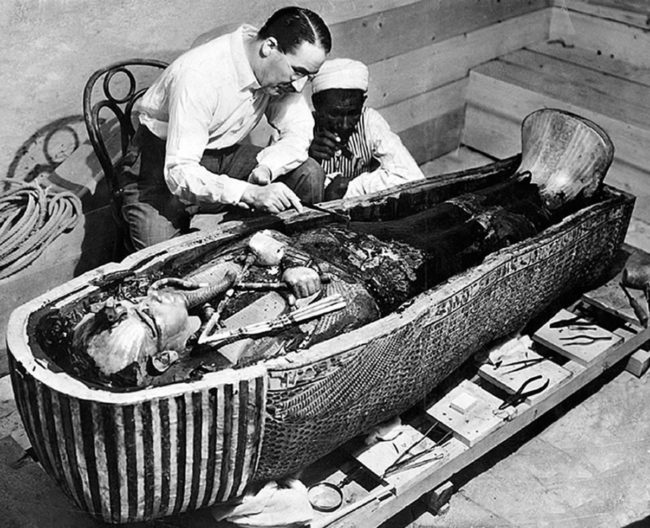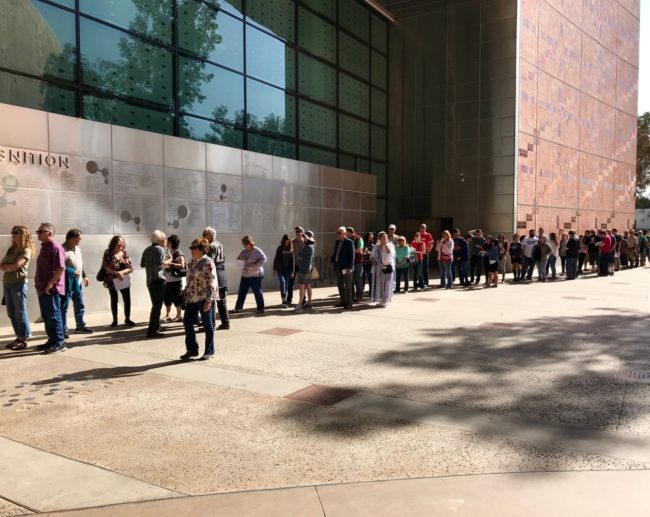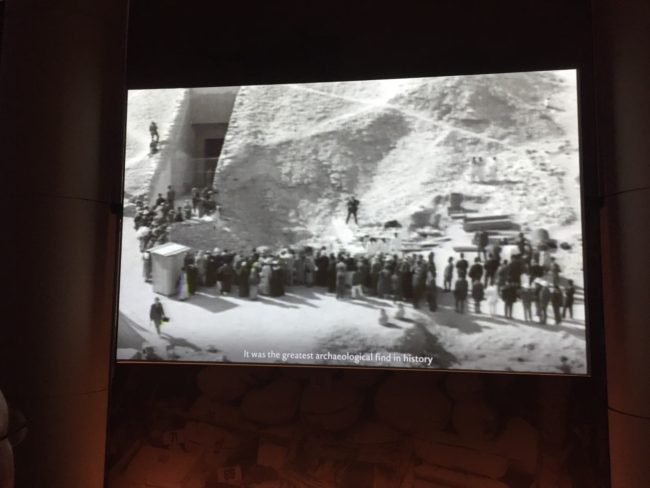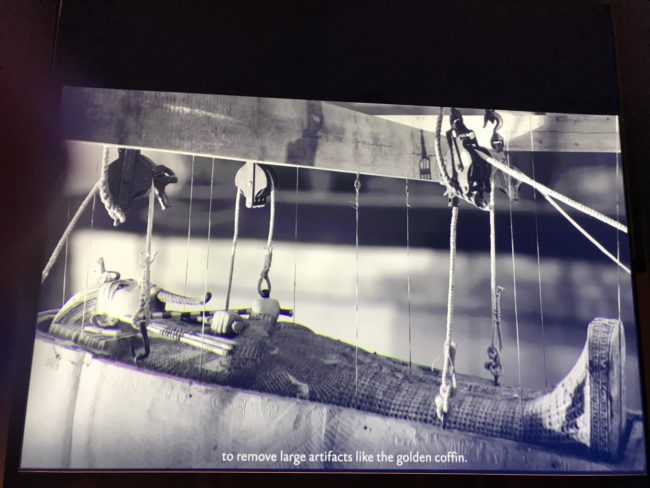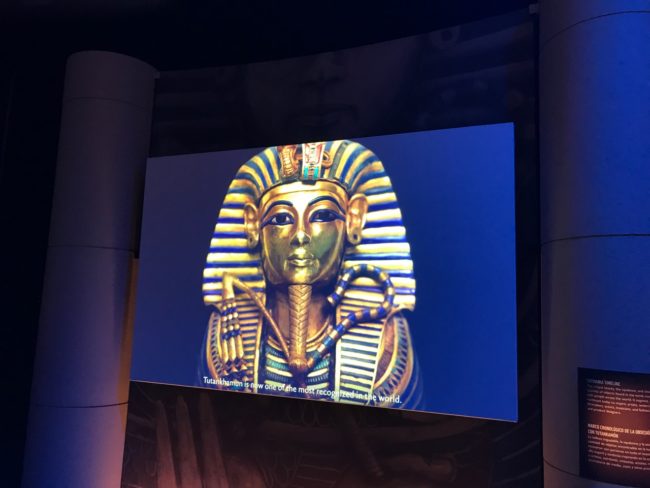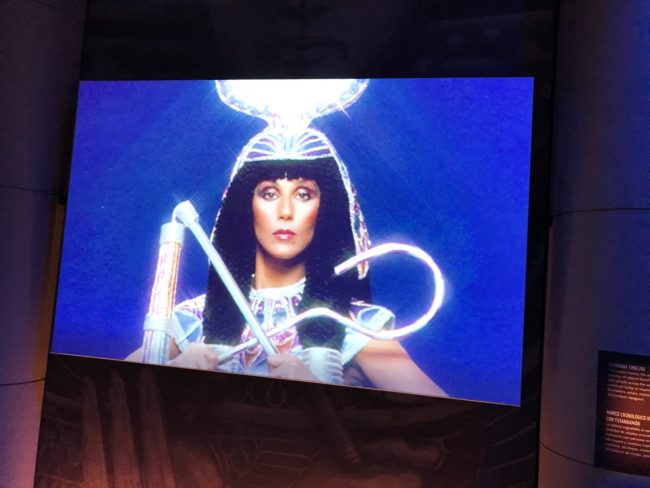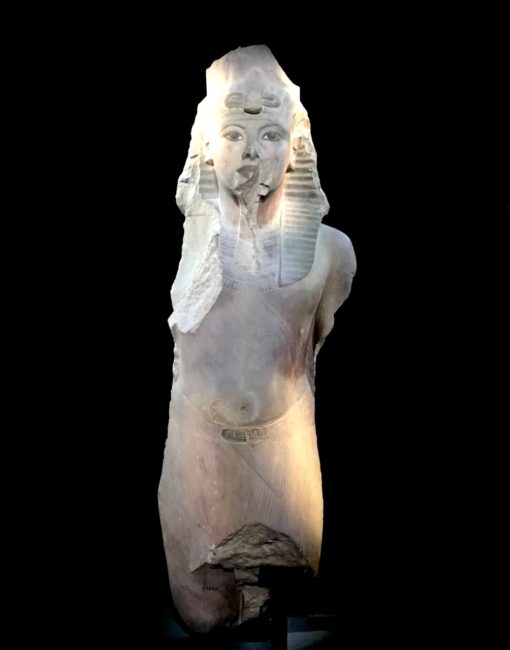
Jet Propulsion Laboratory (JPL) Tour – Pasadena/La Cañada Flintridge
April 2, 2018
Angels Flight Railway – Los Angeles
July 6, 2018“He Gave His Life For Tourism”
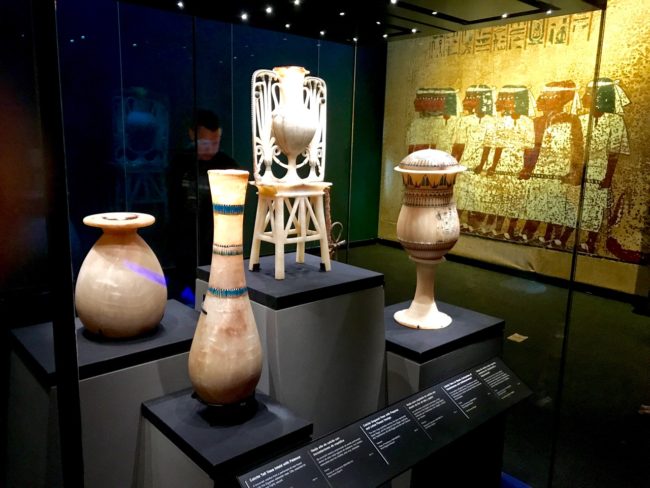 King Tut: Treasures of the Golden Pharaoh – Los Angeles
King Tut: Treasures of the Golden Pharaoh – Los Angeles
(EXHIBITION CLOSED)
Visited: April 2018:
Although no “condo made of stone-a” could be found, Tracy and I recently had the opportunity to witness more than 150 ancient Egyptian artifacts from the tomb of the world’s most famous pharaoh, King Tutankhamun, at the California Science Center (or as they spell it, “ScienCenter”) in Los Angeles. King Tut: Treasures of the Golden Pharaoh has been dubbed “the largest King Tut exhibition” ever!
King Tutankhamun died around 1323 BC at the age of 19, and was virtually lost to history until 1922 when British archaeologist Howard Carter discovered his tomb in the Valley of the Kings in Egypt. Carter had started excavating in Egypt in 1891 but only began a concerted effort to find Tut after the end of World War I.
From Tut’s bio: “On November 26, 1922, Carter and fellow archaeologist George Herbert, the Earl of Carnarvon, entered the interior chambers of the tomb. To their amazement, they found much of its contents and structure miraculously intact. Inside one of the chambers, murals were painted on the walls that told the story of Tutankhamun’s funeral and his journey to the afterworld. Also in the room were various artifacts for his journey, oils, perfumes, toys from his childhood, precious jewelry and statues of gold and ebony. Over the next 17 years, Carter and his associates carefully excavated the four-room tomb, uncovering an incredible collection of thousands of priceless objects. The most fascinating item found in King Tut’s tomb was the stone sarcophagus containing three coffins, one inside the other, with a final coffin made of gold. When the lid of the third coffin was raised, King Tut’s royal mummy was revealed, preserved for more than 3,000 years. As archaeologists examined the mummy, they found other artifacts, including bracelets, rings, and collars.”
Now, Tracy and I would get to see some of them.
We had secured 10 a.m. reservations, the first ones of the day (Purchase tickets online in advance as they are unlikely to be any available for same day). When we drove in about 9:20, a sign stated the entire day was sold out. As Steve Martin sang in the late 70s, “People stand in line to see the boy king.”
Before entering the first of the galleries displaying Tut’s artifacts, we watched a four-minute movie on a 180-degree screen detailing facts about the discovery of the tomb. Inside, we joined some VIPs who had entered early (it was crowded already, so I can only imagine the mass of humanity later in the day).
It was time to check out what artifacts entered into the afterworld with Tut, who died at that early age due to an infection he received after breaking his leg. Here are some of the highlights.
Although we purchased audio guides ($6 online) unless you are a serious Egyptologist the signage on all the displays tell you everything you probably need to know. However, for those who want to spend a lot of time here and take a closer view, there are numerous multimedia presentations that can thrill your inner scientist.
Tut was prepared for his voyage “to the Netherworld” by Priests who packed the tomb with everything he would need, although I did not see a toothbrush.
 Every dead king needs some games to play as they journey through the afterlife.
Every dead king needs some games to play as they journey through the afterlife.
 A red, wooden box and lid inlaid with Ebony and Ivory and contained cartouches of Tut. It did not, however, play the song.
A red, wooden box and lid inlaid with Ebony and Ivory and contained cartouches of Tut. It did not, however, play the song.
 We checked out a gilded wooden and ivory pen case shaped like an architectural column. I wondered what postage to mail a letter from the Netherworld cost in those days.
We checked out a gilded wooden and ivory pen case shaped like an architectural column. I wondered what postage to mail a letter from the Netherworld cost in those days.
 This ebony and cedar chest includes names and epithets of Tut.
This ebony and cedar chest includes names and epithets of Tut.
 He could stash some of his expensive jewelry in this inlaid box.
He could stash some of his expensive jewelry in this inlaid box.
 King Tut watched a lot of energy infomercials because he took his Painted Wooden Model Solar Boat with Throne & Two Paddles on his Afterlife adventure.
King Tut watched a lot of energy infomercials because he took his Painted Wooden Model Solar Boat with Throne & Two Paddles on his Afterlife adventure.
 Hopefully, Tut had a good mattress for this gilded, wooden ceremonial bed, which was apparently built for his funeral. The lion feet are there to guard him.
Hopefully, Tut had a good mattress for this gilded, wooden ceremonial bed, which was apparently built for his funeral. The lion feet are there to guard him.
Moving through the throngs of people, we spied a wooden armchair that was popular during the 18th dynasty,
 a silver trumpet (the Louis Armstrong of the Netherworld?), and a walking stick.
a silver trumpet (the Louis Armstrong of the Netherworld?), and a walking stick.
 This wooden, ceremonial shield portrays the King as a Sphinx trampling his enemies …
This wooden, ceremonial shield portrays the King as a Sphinx trampling his enemies …
 … while this shield shows him slaying some lions. According to the signage, “By demonstrating his mastery of wild animals, Tutankhamun shows his ability to maintain order in Egypt.”
… while this shield shows him slaying some lions. According to the signage, “By demonstrating his mastery of wild animals, Tutankhamun shows his ability to maintain order in Egypt.”
 There was lots of “slaying” going on in these figures.
There was lots of “slaying” going on in these figures.
The Wooden Guardian Statue of the Ka (Pharaoh) of the King was impressive from all angles.
You had to be pretty strong to shoot with this bow.
 Bangles music played in my head throughout the exhibition, and we walked on.
Bangles music played in my head throughout the exhibition, and we walked on.
One of the highlights of the exhibition is the Gold Coffinette, which is a “gold inlaid canopic coffinette of Tutankhamun. During the mummification process, Tut’s organs were removed, individually wrapped in linen bandages, and laid in four miniature coffinettes which held the king’s liver.”
People congregated around Tut (well, he’s not really here) …
… The display included some sandals.
 King Tut’s mummy still lays in his tomb in the Valley of the Kings. He has only been out a couple of times for public viewing. On November 4, 2007, 85 years to the day after Carter’s discovery, he was displayed in his underground tomb at Luxor (not the one in Vegas), when “the linen-wrapped mummy was removed from its golden sarcophagus to a climate-controlled glass box.” Contrary to the song, he was not “buried in his jammies” (photo from CBS)
King Tut’s mummy still lays in his tomb in the Valley of the Kings. He has only been out a couple of times for public viewing. On November 4, 2007, 85 years to the day after Carter’s discovery, he was displayed in his underground tomb at Luxor (not the one in Vegas), when “the linen-wrapped mummy was removed from its golden sarcophagus to a climate-controlled glass box.” Contrary to the song, he was not “buried in his jammies” (photo from CBS)
 By now, we were more than an hour in, and all the galleries were getting very crowded.
By now, we were more than an hour in, and all the galleries were getting very crowded.
We had seen most of the 166 objects by the time we exited, but that was not the end of the Tut exhibition.
We headed downstairs for the continuation of the self-guided tour, but we took a slight detour. Admission to Tut includes a free ticket to check out the Space Shuttle Endeavour. We visited the shuttle years before when it first arrived in Los Angeles. The crowds, as you can see, are much less now.
 Finally, we entered the downstairs Tut gallery, where there are more jewelry and other pieces displayed.
Finally, we entered the downstairs Tut gallery, where there are more jewelry and other pieces displayed.
This gallery concentrates more on the history of finding the tomb and the excavation work Carter and Herbert painstakingly did during those many years.
The short movies were interesting.
There was also a video discussing the marketing of the pharaoh and his place in pop culture, which included a snippet of Cher and, of course, “Funky Tut” himself, Steve Martin.
Before exiting, the Colossal Quartzite Statue of Tutankhamun loomed ahead.
The statue was one of two that stood at Tut’s mortuary temple.
 That large piece concluded our visit to the exhibition featuring the most famous pharaoh of them all. Tut’s afterlife belongings will be hanging around Los Angeles until January 2019. It will be his last (and only) U.S. stop. Then the exhibition heads overseas for a final European tour before taking up permanent residence at Cairo’s Grand Egyptian Museum, located near the Pyramids of Giza.
That large piece concluded our visit to the exhibition featuring the most famous pharaoh of them all. Tut’s afterlife belongings will be hanging around Los Angeles until January 2019. It will be his last (and only) U.S. stop. Then the exhibition heads overseas for a final European tour before taking up permanent residence at Cairo’s Grand Egyptian Museum, located near the Pyramids of Giza.
When you ponder that these items are more than 3,000 years old, it’s remarkable they have remained in such good condition. Go online and choose a date you want to see King Tut: Treasures of the Golden Pharaoh, and secure your tickets.
My one strong recommendation is to reserve the earliest entrance time so you can beat the large crowds. Remember … “He gave his life for tourism,” but you don’t have to!
California Science Center (California ScienCenter)
700 Exposition Park Drive
Los Angeles, California 90037
King Tut: Treasures of the Golden Pharaoh Cost:
Adult $29.95 • Senior/Student: $26.95 • Child $19.50
Audio Guide: $6 (pre-purchase online)
Parking: $12
Metro stop: (Red Line) Expo Park/USC station
Hours: 10 a.m. – 5 p.m.
californiasciencecenter.org




